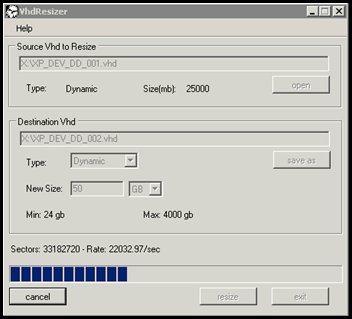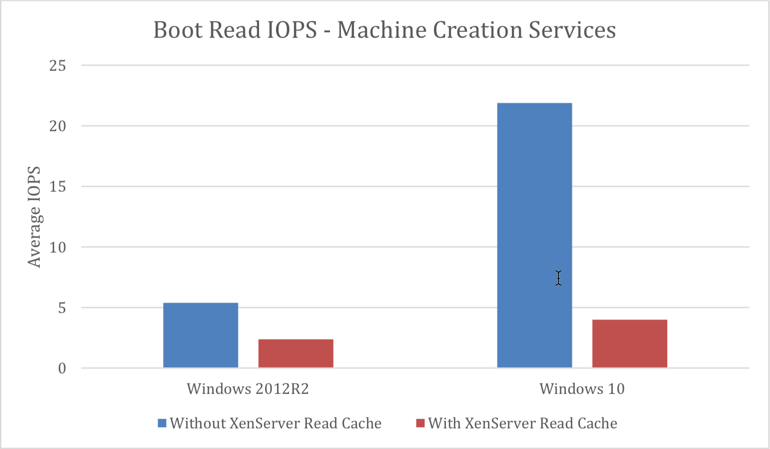Fixed Or Dynamic Vdisks?all About Citrix
- Fixed Or Dynamic Vdisks All About Citrix Download
- Fixed Or Dynamic Vdisks All About Citrix Software
- Fixed Or Dynamic Vdisks All About Citrix Login
- Fixed Or Dynamic Vdisks All About Citrix Cloud
Hello and welcome to Personal vDisks – Part 3! Wow, it’s been a while since I last posted! Hopefully, you’ve read Parts 1 and 2 and found them useful in explaining the practical sides of the new Citrix Personal vDisks and what to expect when implementing it.

- So, point number one – the size of the User and Profile partitions are static, not dynamic. Now, if you have, say a 20GB PvD, you will not necessarily want 50% of this for User Data as you may be using Roaming Profiles (why?!?), Citrix User Profile Management (:)) or another Profile Management system such as AppSense Environment Manager.
- In the VHDX Format text box, select the format as either Fixed or Dynamic (2040 GB for VHDX emulating SCSI; 127 GB for VHDX emulating IDE). If the VHDX format is Dynamic, from the VHDX block size drop-down, select the block size as either 2 MB or 16 MB. Click Create vDisk, a progress dialog opens.
Just to recap, Part 1 covered an introduction into what a PvD is and where it can be used within your XenDesktop environment and Part 2 covered how to configure and initially setup XenDesktops with PvDs.
Now, in Part 3, we are going to (hopefully) dive deeper into what I’ve discovered from installing PvD’s in my test lab (if you haven’t already! I was hoping to get this out about 6-7 weeks ago whilst this was still super new stuff!)
The best choice of deploying vDisks in your Citrix Provisioning Services Environment is taking advantage of the “Dynamic Mode”, but if you are stuck with some vDisks in Fixed mode, you could use the VHD Resizer tool together with either the built in “Windows Disk Management” or “Citrix Provisioning Services” to expand those.
As you can see from the screenshot below, I have allocated a 10GB PvD and it is showing as 50% full. This is because, by default, when you create a PvD, it is created equal parts User and Applications. Also, by default, the User disk (Personal Disk) is given drive letter P: (more about this later).
Fixed Or Dynamic Vdisks All About Citrix Download
By looking at the hidden files within the Personal Disk (PvD), you can see the following files and that the User Application portion of the disk has been marked out for use by the UserData.vhd.thick_provision file.
Hidden files within the PvD
As far as I can tell, this is static so once you fill up this User application area, it will not grow it size. You can also see the UserData.vhd which is the actual user apps area. Now, this is thin provisioned and will grow as you install user apps so the only reason I can think for having the .thick_provision part is to mark out the area of the drive that has been set aside for user apps so that the User Profile section, and I suppose the User apps section doesn’t grow beyond its means and start taking space from the other partition. So, point number one – the size of the User and Profile partitions are static, not dynamic.
Now, if you have, say a 20GB PvD, you will not necessarily want 50% of this for User Data as you may be using Roaming Profiles (why?!?), Citrix User Profile Management (:)) or another Profile Management system such as AppSense Environment Manager. So, having 10GB of space for user data which is redirected anyway is a waste of this space as in theory, the user will never save to it. No problems. We can change the default values by editing the Registry – and before you ask, yes, this is the recommended (and only) way of doing this.
In order to change the default behaviour by amending the following registry entry:
[HKLMSoftwareCitrixpersonal vDiskConfig]
“PercentOfPvDForApps”=dword:0000005a
All of the registry side of the PvD are held in this key. See below for the possible values you can change.
As you can see, I have changed the value to 90 (%). As always, a reboot is required for the change to take effect.
Once rebooted, you can now see that the disk is showing as low disk space because 90% has been fat provisioned as User Application space.
PvD with 90% dedicated to apps
Fixed Or Dynamic Vdisks All About Citrix Software
Now, you may ask “why have this user space when I using UPM/AppSense and redirecting user’s folders to their home drive?”. Well, it just gives you a “free” way of having user personalisation without having to do anything. With the User Data selection, any changes the user makes to the VM, i.e. saves data to “My Documents”, adds icons to Start Menu and changes the Desktop, are redirected to the PvD and saved. This means that after a reboot the O/S image will revert back to the clean PVS image but user personalisation will be persisted without having to install another product. There is nothing to say that you can’t redirect user data and still use the built-in personalisation of the PvD. It is a way of allowing Personalisation for smaller environments where you do not want the added complexity (or possible expense) of having an additional product.
Remember that the main goal of using PvD is to allow users to install their only applications. You are giving the users a Private Desktop but utilising all the benefits of a single, gold PVS streamed image. Less maintenance and easy to update all of your Private Desktops within your estate.
To see this built-in Personalisation, navigate to the newly created P: drive and you will see a Users folder. This is just the C:Users folder redirected, which is dynamic in the sense that you can disable this feature if you wish to use UPM, AppSense or another Profile Management system.
By changing the value of EnableUserProfileRedirection from 1 to 0, you will turn off the built in Profile Management of the PvD and can use whatever you like. Oh, by the way, Citrix have stated that if you are using Citrix User Profile Management then this will automatically be detected and (I imagine) changes this value for you or has some other integration unbeknownst to us at this stage. You do have to use the latest version of UPM though, which is 4.1 (at time of initial writing).
Anyway, back to EnableUserProfileRedirection=0. As you see from the below screenshot, I have disabled User Profile Redirection on my PvD and if you go into P:Users you will notice that the user folder is no longer there but back in its original location of C:Users.
Profile Redirection disabled
Now, it is important to note that these changes should be made before any users have logged into their desktops and had a PvD assigned to them. If you already have users that have logged into their desktops with PvDs before you have disabled profile redirection, changing the registry value of EnableUserProfileRedirection from 1 to 0 will have no effect.

In order to disable Profile Redirection in this case, you will need a different approach. I will document this in a following blog article.
Fixed Or Dynamic Vdisks All About Citrix Login
Another thing I have noticed is with the “PercentOfPvDForApps” value. If you edit this after a user has logged in to change the ration of apps v. user area, then it changes without issue. So, the above example, I changed it from 50/50 split to 90/10 in favour of apps. If you then try to change it again, say, back to 50/50, this change will not take effect. I believe that once you have increased the size of the UserData.vhd.thick_provision file, you cannot shrink it as this is a fixed, thick provisioned partition. Although I haven’t tested this fully, I imagine you can increase the size if you want.
To decrease the size of the User Data partition, you would first have to change the registry setting of PercentOfPvDForApps to the desired value in the base image and update the PvD Inventory (see Part 2 of my blog for this) and then either reset the PvD from the Desktop Director console or run the following command from elevated command prompt on the VM:
“C:Program Filescitrixpersonal vdiskbinctxpvd –s reset”
This would reset all User Data excluding Profile information, so in effect, a user would lose any applications installed.
So, there we have, hopefully a better understanding of Citrix’s Personal vDisks and how you can use them in your environment to replace the traditional “static” Private desktops and utilise single image management with a fully user customisable desktop.
Keep an eye out on my blog for more PvD stuff as I explore further and hopefully have plenty of opportunities to install this for customers in the future.
Thanks for reading and hope this was helpful.
Nicholas Rintalan has written a blog post on the Citrix blogs about the need of seperating the PVS stream to a separate LAN segment.
Here’s a grab of his post:

Similar to what I did in my last article where I discussed fixed versus dynamic vDisks for PVS, let’s first examine what our public documentation says about this so-called best practice. Our oldest technote on this matter was written in 2008 and it pretty much states that it’s a best practice for “several reasons” including “performance, growth and troubleshooting”. Fair enough…let’s come back to that in a minute and dissect each of those reasons one by one. Another article authored in 2011 details how to set up a multi-homed VM to separate ICA traffic from PVS and other traffic. But it never goes into WHY one might want to do so or if it’s a best practice. Maybe our latest and greatest XA+XD best practices whitepaper will provide us with all the answers (and this whitepaper is quite excellent by the way…if you haven’t read it already, you better get on it!). At the bottom of page 50 we state: “Separate the PVS streaming traffic onto a dedicated network for large deployments or in situations where the network is saturated”. OK, that makes a little more sense. But I still don’t understand why everyone seems to think they fall into this category or that this should always be done. In fact, I contend that isolating or segmenting the PVS streaming traffic onto it’s own network is more trouble than it’s worth and should only be done in special situations. There I said it – it’s not a best practice in my opinion and the rule should be to consolidate and keep it simple…the exception should be to isolate the streaming traffic! Why?
Fixed Or Dynamic Vdisks All About Citrix Cloud
You can read the complete post here.
